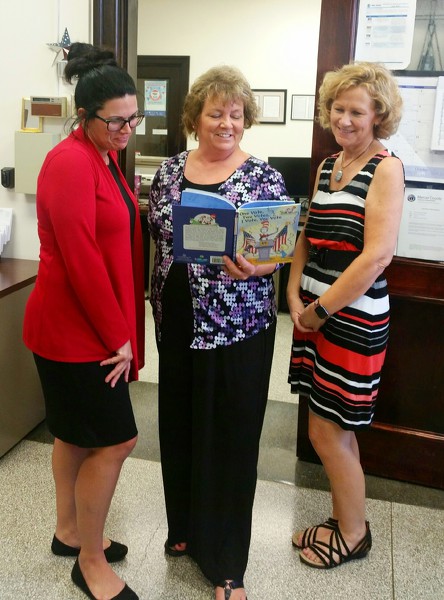Friday, October 4th, 2019
Medical issues handled by school nurses double since 1990s
By Tom Stankard

Photo by Tom Stankard/The Daily Standard
Celina City Schools nurse Kim Smith is in charge of more than just helping sick students and tending to children's injuries.
School nurses may be overlooked, but they are responsible for everything from caring for a sick student or removing a splinter from a student's hand to ensuring students take their medications.
Nurses Kim Smith and Candy Weitz at Celina City Schools and Jodi Weigel at Coldwater Exempted Village Schools say the job is demanding, but they still enjoy taking care of students every day.
"I have the opportunity to provide health education and nursing services to students and their families - enhancing our students' school performance and our communities' health care decisions," Weitz said. "Quite simply, as a school nurse, I save lives and help children learn."
To become a school nurse, a person must obtain a bachelor's degree, a nursing license from the Ohio Department of Health and be certified by the Ohio Department of Education, they pointed out.
Weigel and Smith said part of their duties include making sure every student gets vaccinated and receives a vision and other screenings on time.
"That doesn't always happen, so sometimes I have to track down the ones that don't get them done," Smith added.
Smith said she took care of close to 600 students at the middle school in the 1990s. Only about half that number are enrolled now, but the number of students with medical issues has doubled.
Many more students are dealing with diabetes, seizures and allergies to food and bee stings, Smith said.
School nurses also are responsible for training staff on how to treat each student's specific needs and to respond to potential emergencies, Smith said.
Kids come to the school clinics for many different reasons, and Weigel said the nurse must put the pieces together to figure out what's wrong and how to help.
Boys more often than girls tend to get injured at play, Smith said.
"They sometimes try to touch the rim on the basketball hoop and break their wrist," she noted. "A student has come with a dislocated knee before."
Other than injuries, Smith said students most often visit her during flu season, when they feel lightheaded or have a stomach ache or sore throat.
Older students fake being sick all the time, though, Smith said. With years of experience, she said she can easily tell if a student is not being honest, noting his or her answers to what they are feeling don't correspond to the illness from which they claim to be suffering.
That's why Smith said she enjoys caring for younger students more.
"They need the most care, and they don't try to get out of class," she said.
Smith said she enjoys developing relationships with students as they get older, and some even invite her to graduation parties.
Students aren't the only ones who may need help, she added. She said she also enjoys taking time during monthly wellness committee meetings to advise teachers on how to be more active and eat better.
"For being so highly educated, they are not knowledgable about their health because they're so preoccupied by their students' needs," she said.
Although the job can be stressful, Smith, Weitz and Weigel said they wouldn't have it any other way.
"I enjoy the fast pace and variation of each day in the clinics. I am an advocate for meeting the increasing number and acuity of our students' health care needs, so our students are successful learners," Weitz said.




